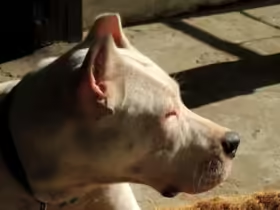Introducing a new cat to your dog can be a delicate process, but with careful planning and patience, you can create a harmonious environment for both pets. Here’s a step-by-step guide to help ensure a smooth introduction and foster a positive relationship between your new cat and existing dog.
1. Prepare for the Introduction
Before bringing your new cat home, it’s crucial to prepare your environment and your dog for the new addition.
For Your Dog:
- Reinforce Basic Commands: Ensure your dog responds well to basic commands such as “sit,” “stay,” and “leave it.” This will help manage their behavior during the introduction process.
- Create a Safe Space: Set up a separate, quiet area for your new cat where they can retreat and feel secure. This could be a separate room with their litter box, food, and water.
For Your Cat:
- Establish a Safe Zone: Before the introduction, make sure your cat has a safe space where they can feel comfortable. This helps reduce stress and provides a refuge if they feel threatened.
2. Introduce Scents First
Animals rely heavily on their sense of smell to understand their environment and other creatures. Begin the introduction process by swapping scents between your dog and cat.
- Scent Exchange: Rub a cloth or towel on your new cat and then let your dog sniff it. Do the same with an item from your dog and present it to your cat. This helps both pets get used to each other’s scents in a non-threatening way.
Action Step: Repeat the scent exchange process for several days to help both animals become accustomed to each other’s presence.
3. Allow Initial Visual Contact
Once both pets seem comfortable with the scent exchange, you can start with controlled visual introductions.
- Use a Baby Gate: Place a baby gate or similar barrier between your cat and dog. This allows them to see each other without direct physical contact.
- Supervised Interaction: Observe their reactions. Watch for signs of aggression or anxiety and ensure both pets remain calm. Praise and reward them for positive behavior.
Action Step: Gradually increase the amount of time they spend observing each other, while continuing to offer treats and praise.
4. Facilitate Positive Experiences
Creating positive associations with each other is key to a successful introduction.
- Treats and Praise: When your dog and cat are calm in each other’s presence, reward them with treats and praise. This helps them associate each other with positive experiences.
- Interactive Play: Engage your dog in play sessions and use toys to distract them. Provide your cat with engaging toys and treats to keep them entertained and less focused on the dog.
Action Step: Consistently reward good behavior and ensure each pet has their own positive experiences during the introduction phase.
5. Supervise Face-to-Face Meetings
When you feel confident that your pets are ready, you can allow them to meet face-to-face under supervision.
- Leashed Introduction: Keep your dog on a leash to control their movements. Allow your cat to approach at their own pace. Never force the interaction; let it happen naturally.
- Monitor Body Language: Watch for signs of aggression or fear from both pets. If either pet shows distress, calmly separate them and try again later.
Action Step: Keep the initial face-to-face meetings short and gradually increase the duration as both pets become more comfortable.
6. Gradually Increase Interaction Time
As your pets become more comfortable with each other, gradually increase their interaction time.
- Short Sessions: Start with brief sessions of supervised time together and gradually extend the duration as they show positive behavior.
- Positive Reinforcement: Continue to reward both pets for calm behavior and good interactions.
Action Step: Regularly assess their interactions and make adjustments as needed. Ensure that both pets are comfortable and relaxed during these sessions.
7. Provide Safe Spaces for Both Pets
Even after successful introductions, it’s essential to provide each pet with their own space where they can retreat if needed.
- Safe Spaces: Ensure that your cat has high perches or secluded areas where they can escape if they feel threatened. Your dog should also have a designated resting area away from the cat.
- Separate Resources: Keep food, water, and litter boxes in separate areas to avoid resource guarding and competition.
Action Step: Regularly check to ensure both pets have access to their safe spaces and resources.
8. Monitor and Manage Jealousy or Aggression
Be attentive to signs of jealousy or aggression and address them promptly.
- Jealousy: If your dog displays jealousy, ensure they receive plenty of individual attention and positive reinforcement.
- Aggression: If either pet shows signs of aggression, separate them immediately and consult a professional if needed.
Action Step: Address any issues of jealousy or aggression with patience and positive reinforcement. Consider consulting a professional trainer or behaviorist if problems persist.
9. Foster Bonding Through Joint Activities
Encourage positive interactions through joint activities to strengthen the bond between your pets.
- Playtime: Engage in activities that involve both pets, such as interactive play sessions or training exercises. This helps build a positive association between them.
- Training Sessions: Teach both pets basic commands and tricks together to promote teamwork and mutual respect.
Action Step: Plan regular joint activities and ensure that both pets have opportunities to interact positively.
10. Be Patient and Consistent
Introducing a new cat to your dog is a process that requires time and consistency. Be patient and adjust the pace based on your pets’ reactions.
- Consistency: Follow a consistent approach to the introduction process and be prepared to repeat steps if necessary.
- Patience: Understand that every pet is different, and the process may take weeks or even months. Celebrate small victories and progress.
Action Step: Maintain a positive attitude and continue to monitor and support both pets throughout the introduction process.











Leave a Reply